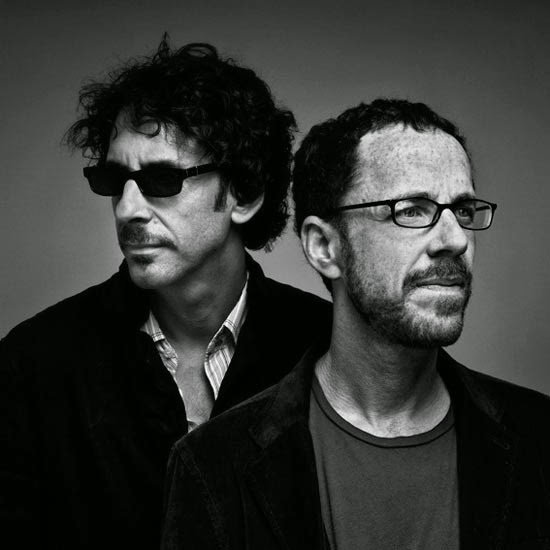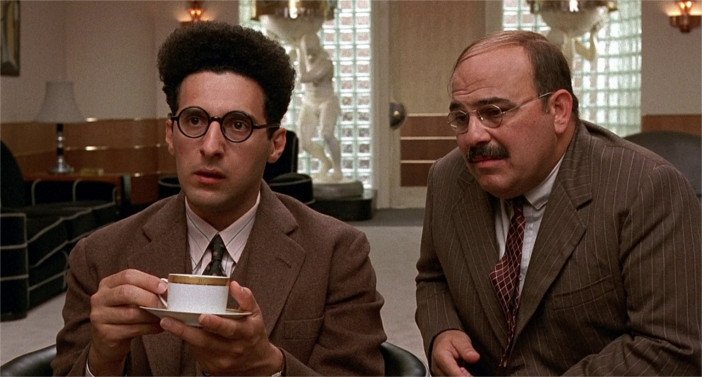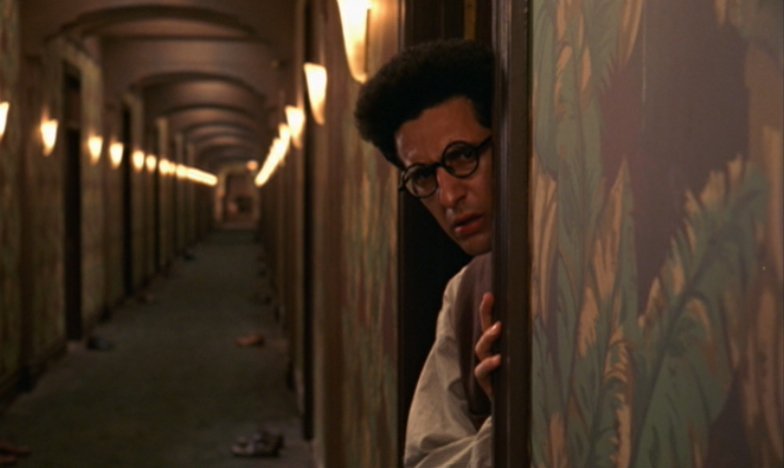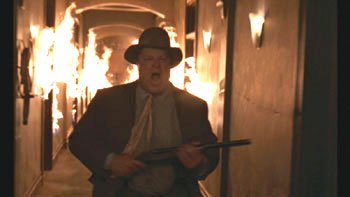Best of The Coen Brothers and How Barton Fink Explains All
We’re only interested in one thing, Bart. Can you tell a story? Can you make us laugh? Can you make us cry? Can you make us want to break out in joyous song? Is that more than one thing? Okay! – Jack Lipnik, Barton Fink – Written by Joel and Ethan Coen, 1991.

For over 30 years, Joel and Ethan Coen have created some of the most unique and undeniably curious films to grace the cinema screens of the world. These two brothers from Minnesota have, over the course of their careers, been responsible for creating a genre onto themselves; their films are Coen-esque – in some ways the simplest way to describe them. Often darkly humorous, drenched in satire and black irony, and filled with unforgettable characters that are heavily characterised regardless of their importance to the overall film, with even the smallest roles standing out with distinctiveness and influence. The lead roles the Coen Brothers have created are dense and quirky but none-the-less utterly unforgettable, with one character, that of The Dude from their 1997 film The Big Lebowski, gaining his own religion, Dudeism.
Importantly, over these 30 years, the ability to write original screenplays together, concocting this distinctive style of writing, and developing their films has never waned, and interestingly, has never been subject to influence from anybody outside their own two heads. They write their scripts together and continue on to produce, direct and edit the projects themselves. For many this would be an extremely difficult process; however the Coens describe it as more of an organic process. Ethan describes it as “basically just us sitting around in a room, moping for hours.”
Their coy answers, common amongst interviews with them, often hint at a refusal to explain these methods of writing, and indeed, this awkwardness is understandable as the creative process can be personal, even if it is shared between two writers. They do both agree however, that they never argue regarding this process.

Their films are often a post-modern homage to the genre film, taking the formula but re-interpreting it through their own idiosyncratic minds. Their first film, Blood Simple, written in 1984, was a take on the noir thriller but was fused with sardonic black comedy. It paved the way for 30 years of filmmaking, writing and directing numerous films which range in genre from the screwball comedy homage of the 30s like Raising Arizona and Intolerable Cruelty to the intricate twisting of The Man Who Wasn’t There. Between these you’ll find westerns (No Country For Old Men, True Grit), gangster films (Miller’s Crossing), surreal comedies (The Big Lebowski, O Brother, Where Art Thou) and a few films which seem to deny a rooting to any specific genre, instead fusing them together to form a pastiche view of the world (Fargo, Barton Fink). Although they have tried a film in practically every genre that Hollywood recognises, none have been specifically related to the genre itself. Each film is a unique view, a unique voice and a unique example of how the Coen Brothers will not succumb to the cohesion of writing a single-faceted genre film. Perhaps it is their own upbringing in rural America that has given them this mysterious ability to avoid the usual and concentrate on the specific and highly distinctive worlds they create, often setting their films in the past to further glorify the time period with their own exaggerated motifs.
The Coens live in New York City and have spent their careers in the financial shadows of the Hollywood machine, a place they are more than happy to stay, and it is their 1991 film Barton Fink which shows their own personal view on what would happen to a young screenwriter newly arrived in Hollywood.

Barton Fink tells the story of the a young, Jewish, idealistic, leftwing playwright (Barton Fink) from New York in the 1940s, who is commissioned by a studio to write a wrestling picture, however after reaching Hollywood and checking into the hellish Hotel Earle he is overcome by a bout of writers block. The story itself takes place for the most part in Barton’s claustrophobic and sweaty hotel room, a place written in the screenplay as;
The room is small and cheaply furnished. There is a lumpy bed with a worn-
yellow coverlet, an old secretary table, and a wooden luggage stand.
The Coens wrote the script in just three weeks, whilst themselves suffering from a bout of writer’s block while attempting to complete the intricate Miller’s Crossing. They mention, amongst others, the writings of Otto Freidrich and Jim Thompson as influences on the story along with the Roman Polanski films The Tenant and Repulsion. Ironically, when Barton Fink went on to pick up three awards at the Cannes film festival it was chaired by Polanski himself.

Thematically the film is a maze weaving through the quick fire satire of the Hollywood machine with the desperate journey of Barton, as he egotistically struggles with lowering himself to the level of writing a B-movie. Along with this are themes of Nazism, the idea of art imitating life (and vice versa), and the dangers of living within one’s head. Add to this a bout of murder and left-wing cowardice and it’s your standard Coen Brother’s mesh of intricate subject matters which seem to hint at certain things without ever letting you interpret them cohesively. Generically, even the Coen’s don’t know what it is, they say, “it’s a comedy, a buddy movie, a coming-of-age story, a horror.”
As screenwriters the Coens initially followed the basic three act structure with Barton coming to Hollywood in the first act, and losing his ability to write and falling in love in the second act. The third act however, takes a dismal and sinister turn to an eventual surreal and thoroughly dark finale. The Coens prefer to play with the structure, in keeping with their own dark humour regarding genre. The structure is there and the genre is there but there is something not quite right about them. This style of writing echoes in many of their scripts, particularly in their 1996 film Fargo.
The Coens employ a rather dialogue heavy style to their script with many characters talking at ferocious speed, not for specific expositional reasons but rather for the embedding of the character’s idiosyncratic nature on the audience. It is because of this that so many of the Coen’s characters over the years have been so memorable, along with the unforgettable nature of the stories they are involved in. In Barton Fink, the studio head Jack Lipnik, written to resemble Jack Warner, speaks at a pace resembling that of a machine gun and represents the Coen’s view of the fallacy of Hollywood. An excerpt from the script:
LIPNIK
That’s okay, that’s okay, that’s okay – that’s just fine. You probably just walked in here thinking that was going to be a handicap, thinking we wanted people who knew something about the medium, maybe even thinking there was all kind of technical mumbo-jumbo to learn. You were dead wrong. The point is, I run this dump and I don’t know the technical mumbo-jumbo. Why do I run it? I’ve got horse-sense, goddamnit. Showmanship. And also, and I hope Lou told you this, I’m bigger and meaner than any other kike in this town. Did you tell him that, Lou? And I don’t mean my dick’s bigger than yours, it’s not a sexual thing – although, you’re the writer, you would know more about that. Coffee?
This sort of dialogue appears in the majority of the Coens scripts and puts aside the writing of specific image systems, however, considering the two write the scripts that they themselves will direct then it is hard to know whether these image systems are created but just not written, a sort of unspoken knowledge of how they will appear, concocted during the writing process.

Throughout Barton Fink the Coen Brothers hint at what they feel about the Hollywood machine and the lure money and glamour has on the imagination. As the final act descends into its hellish fiery finale, the Coens seem to be telling Hollywood that they are not tempted to do a genre film, much in the same way that Barton himself is reluctant to do a wrestling film. This, perhaps, suggests their own self-deprecating humour. They like the idea of writing a film that plays with the viewer’s perception of a specific genre, whether it is to play with the genre itself, or whether it is to write a film that seems to be a web of genres as intricate as the plots written to support them. Either way, the screenplays they write form some of the most unique and compelling films of modern times, attracting critical praise and drawing attention to both the visual style and the idiosyncratic writing that has made Joel and Ethan Coen a creative force unrivaled in the field of film-making.

